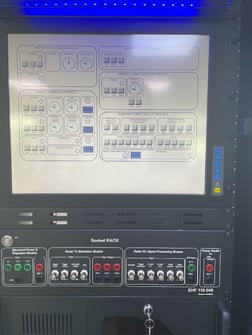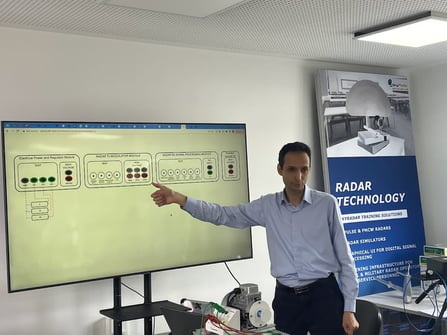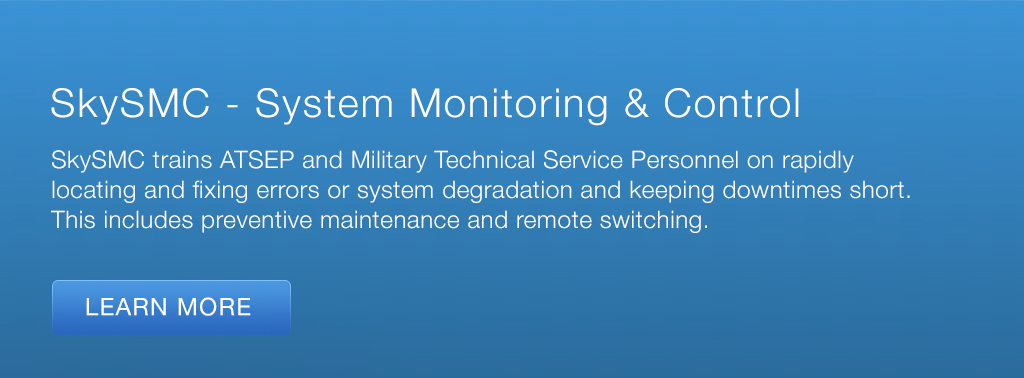In the field of air traffic control (ATC), ensuring the accuracy and precision of systems and equipment is of utmost importance. However, even with the most advanced technology and well-trained personnel, errors can still occur. One type of error that can significantly impact the performance of ATC systems is processing errors due to resolution. In this article, we will define processing errors due to resolution, discuss their impact on ATC, and explore steps that can be taken to prevent and rectify these errors.
Definition of Processing Errors due to Resolution
Resolution refers to the smallest distinguishable difference between two values or measurements. In the context of ATC, resolution is important because it affects the accuracy and precision of information being transmitted and received by various systems and equipment. Processing errors due to resolution occur when there is an error in the processing or interpretation of this information, leading to inaccurate or imprecise results.
What is Resolution? Explain with an example related to ATSEP and Air Traffic Control Service
In ATC, resolution is often related to the accuracy of radar systems. For example, a radar system may have a resolution of 100 feet, which means that it can distinguish between two objects that are at least 100 feet apart. This resolution can be affected by a variety of factors, such as weather conditions, the quality of the radar system, and the experience and skill of the personnel operating the system.
An ATSEP (Air Traffic Safety Electronics Personnel) is responsible for maintaining and ensuring the accuracy of ATC systems. For example, an ATSEP may be responsible for calibrating and testing radar systems to ensure that they meet the required resolution standards.
Scenario Illustrating Impact of Processing Error Related to Resolution on Air Traffic Control Services
Here are two pedagogical scenarios that illustrate the impact of processing errors related to resolution on air traffic control services
Scenario 1: The Merged Targets
In a bustling air traffic control center, there was a dedicated controller named Alice. Alice's role was to monitor and guide aircraft through a complex airspace. She relied on a radar system that processed incoming signals to detect and display aircraft positions.
One day, Alice noticed that two aircraft appeared to be merged into a single target on her radar display. This anomaly puzzled her and created confusion as she tried to determine the actual positions of the individual aircraft.
After investigating the issue, Alice discovered that the radar system was experiencing a processing error related to resolution. The error caused the system to merge the signals of nearby aircraft with similar characteristics into a single target, compromising the ability to distinguish and track them separately.
As a result, Alice faced challenges in accurately determining the positions of individual aircraft and ensuring proper separation between them. The processing error affected her decision-making process, potentially leading to incorrect instructions, compromised safety, and increased workload in managing the airspace.
This scenario emphasizes the importance of accurate processing and resolution in radar systems for air traffic control services. Processing errors related to resolution can result in merged targets, compromising the controller's ability to monitor aircraft movements effectively and maintain proper separation.
Scenario 2: The Missing Aircraft
In a bustling air traffic control center, there was an experienced controller named Bob. Bob's primary responsibility was to ensure the safe and efficient flow of aircraft in his assigned airspace. He relied on a radar system that processed signals to detect and display aircraft positions.
One day, Bob noticed that an aircraft he was expecting to see on his radar display was missing. Perplexed, he investigated the issue and discovered that the radar system was experiencing a processing error related to resolution.
The processing error resulted in the radar system failing to detect and display the aircraft with lower resolution signals. As a consequence, Bob was unable to see the position and track the movement of the aircraft, which could pose safety risks and hinder his ability to provide appropriate instructions.
This scenario highlights the critical impact of processing errors related to resolution on air traffic control services. When the radar system fails to detect aircraft due to resolution limitations, controllers may miss critical information, leading to compromised situational awareness and potential risks to the safe management of airspace.
By presenting these scenarios, learners can understand the practical implications of processing errors related to resolution on air traffic control services. They can appreciate the importance of accurate processing algorithms and resolution capabilities for reliable aircraft detection, position tracking, and effective air traffic management.
Steps to be taken by ATSEP in Rectification of Processing Errors related to Resolution
When processing errors related to resolution occur in air traffic control services, ATSEP (Air Traffic Safety Electronics Personnel) need to take immediate steps to rectify them. Here are the steps that ATSEP can take in detail:
Identify the root cause
The first step is to identify the root cause of the processing error related to resolution. This can involve reviewing system logs, analyzing data, and conducting tests to determine where the error occurred and what caused it.
Isolate the error
Once the root cause has been identified, the next step is to isolate the error. This can involve shutting down affected systems or rerouting traffic to avoid the area of the error.
Develop a plan
After isolating the error, ATSEP need to develop a plan for rectifying the error. This plan should include a detailed step-by-step process for fixing the error and should take into account any safety concerns or impacts on air traffic.
Implement the plan
With a plan in place, ATSEP can then implement the steps to rectify the error. This can involve replacing faulty hardware components, repairing software bugs, or recalibrating sensors.
Test the fix
After implementing the fix, it is important to thoroughly test the system to ensure that the processing error related to resolution has been fully rectified. This can involve conducting simulations, running diagnostic tests, and monitoring system performance.
Document the process
Finally, it is important to document the entire process for rectifying the processing error related to resolution. This documentation can be used to inform future troubleshooting efforts and to ensure that the error does not recur in the future.
Overall the steps for rectifying processing errors related to resolution involve identifying the root cause, isolating the error, developing a plan, implementing the plan, testing the fix, and documenting the process. ATSEP play a critical role in this process and need to work quickly and efficiently to ensure the safety and reliability of air traffic control services. To prevent resolution-related processing errors, ATSEPs can take the following steps:
Conduct regular system checks
ATSEPs should conduct regular system checks to identify any potential issues with the system. This includes conducting routine maintenance and inspections to ensure that all components are functioning correctly.
Implement redundancy
ATSEPs should implement redundancy in the system design to ensure that there is backup support in case of any failures. This includes implementing redundant sensors, data processing systems, and communication systems.
Update software regularly
Regular software updates should be implemented to ensure that the system is operating with the latest technology and software. These updates can help to fix any bugs or errors that could cause resolution-related processing errors.
Implement user training
ATSEPs should provide user training to all personnel who operate the system. This includes training on system operation, troubleshooting, and best practices for data entry and interpretation.
Implement quality assurance processes
Quality assurance processes should be implemented to ensure that data is accurately entered and interpreted. This includes implementing checks and balances to verify data accuracy and providing feedback and corrective action when necessary.
By implementing these steps, ATSEPs can help to prevent resolution-related processing errors and ensure the safe and efficient operation of air traffic control services.
Factors That Contribute to Resolution Related Processing Errors in ATC
There are several factors that can contribute to resolution related processing errors in air traffic control services. Understanding these factors is critical to preventing and rectifying such errors. Here are some of the most common factors:
Human error
Human error is one of the leading factors that can contribute to resolution related processing errors. This can include errors in data entry, misinterpretation of data, and incorrect system operation. Training and experience can help reduce the incidence of human error.
Faulty components
Faulty components can also contribute to resolution related processing errors. This can include malfunctioning sensors, faulty cables, and other hardware issues. Regular maintenance and testing can help identify and address these issues before they cause problems.
Software bugs
Software bugs can also contribute to resolution related processing errors. These bugs can be introduced during software development or can occur as a result of system updates. Thorough testing and debugging can help identify and address software issues.
Environmental factors
Environmental factors such as electromagnetic interference and weather conditions can also contribute to resolution related processing errors. Shielding and other protective measures can help mitigate these factors.
Communication errors
Communication errors can also contribute to resolution related processing errors. Miscommunication between controllers and pilots, or between different control centers, can lead to errors in resolution. Improving communication protocols and using clear and concise language can help reduce these errors.
Inadequate training
Inadequate training can also contribute to resolution related processing errors. ATSEP and other personnel involved in air traffic control services need to receive adequate and ongoing training to ensure they are equipped with the necessary skills and knowledge to perform their duties effectively.
System overload
Overloading of the system can also cause resolution related processing errors. This can occur when the system is not designed to handle a high volume of traffic or when it is not properly maintained. Upgrading the system and ensuring it is properly maintained can help reduce the incidence of errors caused by system overload.
Understanding these factors and implementing strategies to mitigate them can help reduce the incidence of resolution related processing errors in air traffic control services.
Common Types of Processing Issues Caused by Resolution Errors
Target identification errors
Target identification errors can occur when resolution is not high enough to distinguish between two targets that are close together. This can result in the incorrect identification of a target, which can lead to dangerous situations.
Altitude reporting errors
Altitude reporting errors can occur when the resolution of altitude data is not high enough to accurately report the altitude of an aircraft. This can result in the incorrect altitude being reported, which can lead to unsafe separation between aircraft.
Speed reporting errors
Speed reporting errors can occur when the resolution of speed data is not high enough to accurately report the speed of an aircraft. This can result in the incorrect speed being reported, which can lead to unsafe separation between aircraft.
Course reporting errors
Course reporting errors can occur when the resolution of course data is not high enough to accurately report the course of an aircraft. This can result in the incorrect course being reported, which can lead to unsafe separation between aircraft.
Position reporting errors
Position reporting errors can occur when the resolution of position data is not high enough to accurately report the position of an aircraft. This can result in the incorrect position being reported, which can lead to unsafe separation between aircraft.
Communication errors
Communication errors can occur when resolution is not high enough to accurately transmit and receive communication between air traffic controllers and pilots. This can result in misunderstandings or miscommunications, which can lead to dangerous situations.
Data entry errors
Data entry errors can occur when resolution is not high enough to accurately enter data into the system. This can result in incorrect data being entered, which can lead to dangerous situations.
It is important to note that these errors can occur due to a combination of factors and are not limited to resolution alone. The impact of resolution-related processing errors in air traffic control can be severe and potentially life-threatening. These errors can result in incorrect aircraft separation, leading to the risk of mid-air collisions or other dangerous situations. Other impacts of resolution-related processing errors can include delayed flights, disruptions to airport operations, and increased workload for air traffic controllers.
In some cases, resolution-related processing errors have resulted in incidents or accidents. For example, in 2018, a mid-air collision occurred between two small aircraft in the United States, resulting in the deaths of three people. The National Transportation Safety Board (NTSB) investigation found that a contributing factor to the accident was a processing error related to resolution, which caused the air traffic controller to lose awareness of the position of the two aircraft.
Resolution-related processing errors can also have economic impacts, such as flight delays and cancellations that can lead to lost revenue for airlines and airports. Additionally, incidents or accidents resulting from these errors can lead to lawsuits and legal liabilities.
Overall resolution-related processing errors can have significant impacts on both safety and efficiency in air traffic control operations, highlighting the importance of effective system design, maintenance, and monitoring to prevent these errors from occurring.
There are several steps that can be taken to prevent errors related to resolution in air traffic control services
Regular Maintenance
Regular maintenance of equipment and systems can help detect and rectify issues before they lead to errors. This includes monitoring and testing of sensors, cables, and other components.
Staff Training
Proper training and certification of air traffic control personnel and ATSEP is crucial to prevent errors related to resolution. This includes training on the use of equipment and systems, as well as protocols for data analysis and interpretation.
System Upgrades
Regular system upgrades can help prevent errors related to resolution by ensuring that software and hardware components are up to date and functioning properly.
Quality Control
Quality control measures such as regular audits, inspections, and checks can help prevent errors related to resolution. These measures ensure that systems are functioning as intended and that data is accurate and reliable.
Redundancy
Incorporating redundancy in the air traffic control system can help prevent errors related to resolution. This includes duplicate sensors and systems that can provide backup data in case of failures or errors.
Human Factors Engineering
Human factors engineering can help prevent errors related to resolution by optimizing the design of equipment and systems for human use. This includes factors such as ergonomics, user interface design, and cognitive workload management.
By implementing these measures, air traffic control services can significantly reduce the risk of errors related to resolution and ensure the safety of passengers and crew in the aviation industry.
Research Highlights
Impact on data quality
Low-resolution data may lead to loss of fine details and nuances, affecting the accuracy and reliability of analyses and interpretations.
Sampling bias
Insufficient resolution can introduce sampling bias, as important features or patterns may be missed or misrepresented in the data, skewing the results.
Spatial and temporal limitations
Coarse resolution can hinder the detection of small-scale or short-term phenomena, limiting the understanding of dynamic processes or localized events.
Uncertainty and errors
Processing low-resolution data can introduce additional uncertainties and errors in calculations, modeling, or predictions, potentially compromising the validity of the findings.
Scaling challenges
Combining data with disparate resolutions can pose challenges, requiring careful methodologies to integrate and analyze information consistently and accurately.
SkyRadar's System Monitoring & Control Solution
SkySMC - SkyRadar’s System Monitoring and Control Suite is a pedagogically enhanced, fully operational monitoring & control tool. It has been designed to practice these use cases. We have optimized it to host ATSEP training in SUR, NAV, COM, DPR and SMC compliant to EASA's Easy Access Rules for ATM-ANS (Regulation (EU) 2017/373) and ICAO Doc 10057.
SkyRadar provides SkySMC as a complete laboratory in a turn-key approach, or as a virtual infrastructure (for purchase or as a service).
SkySMC is not a simulator, but a fully operational open monitoring system. It comes by default with a server including various virtualized applications and virtualized servers, but also connects to simulated systems. In addition, there are various hardware extensions available including training infrastructures, monitorable training radars, or even complete ATM systems, all connected to the System Monitoring & Control solution. Most components such as the radars, it IT infrastructure or networks exist in hardware and software (virtualized or simulated).
The two photos above show the same trouble-shooting panel and socket rack in real hardware and in the simulator (fully functioning).
SkyRadar's System Monitoring & Control training system can be easily blended into distance learning solutions and existing learning management systems.
Let's talk
Stay tuned to be always the first to learn about new use cases and training solutions in ATSEP qualification (real radars or simulators).
Or simply talk to us to discuss your training solution.
References
-
Federal Aviation Administration. (2019). Human Factors in Aviation Maintenance and Inspection. Retrieved from https://www.faa.gov/regulations_policies/handbooks_manuals/aircraft/amt_handbook/media/FAA-8083-30_Ch11.pdf
-
International Civil Aviation Organization. (2018). Manual on Air Traffic Safety Electronics Personnel (ATSEP). Retrieved from https://www.icao.int/safety/GlobalAirNav/Pages/ATSEP.aspx
-
Kenda, B. M., & Križanić, M. (2019). A review of the influence of environmental factors on radar systems. Journal of Applied Engineering Science, 17(1), 71-80.
-
Lee, J. D. (2018). Human factors of automation in aviation. Academic Press.
-
National Transportation Safety Board. (2019). Aviation Accident Final Report: Loss of Control at Takeoff Atlas Air Inc. Boeing 767-375ER, N1217A Trinity Bay, Texas February 23, 2019. Retrieved from https://www.ntsb.gov/investigations/AccidentReports/Reports/AAR2002.pdf






